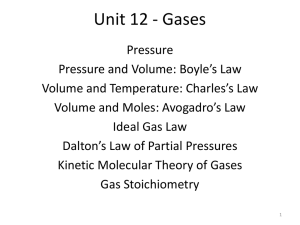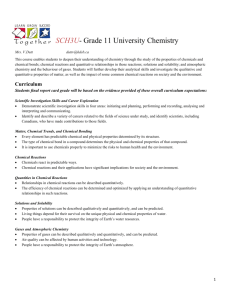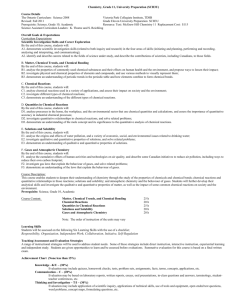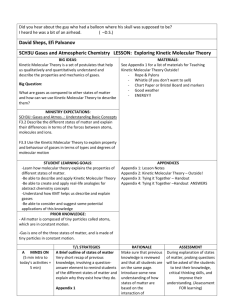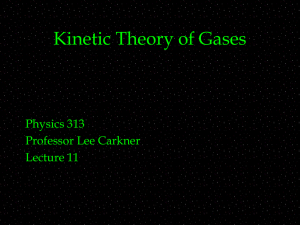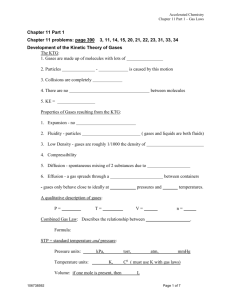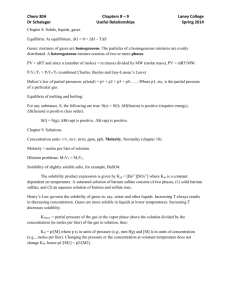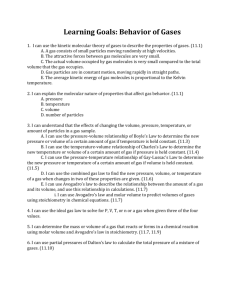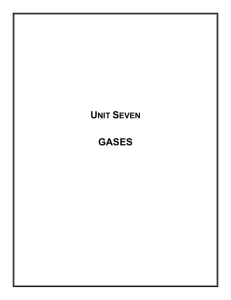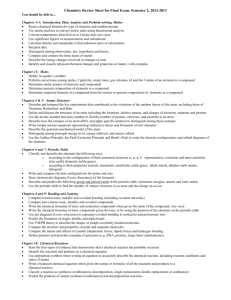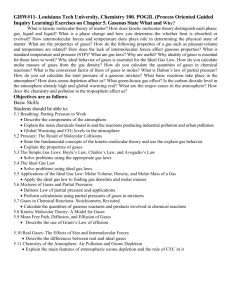Gr.11 Chemistry Exam Review The best way to study for your Chem
advertisement
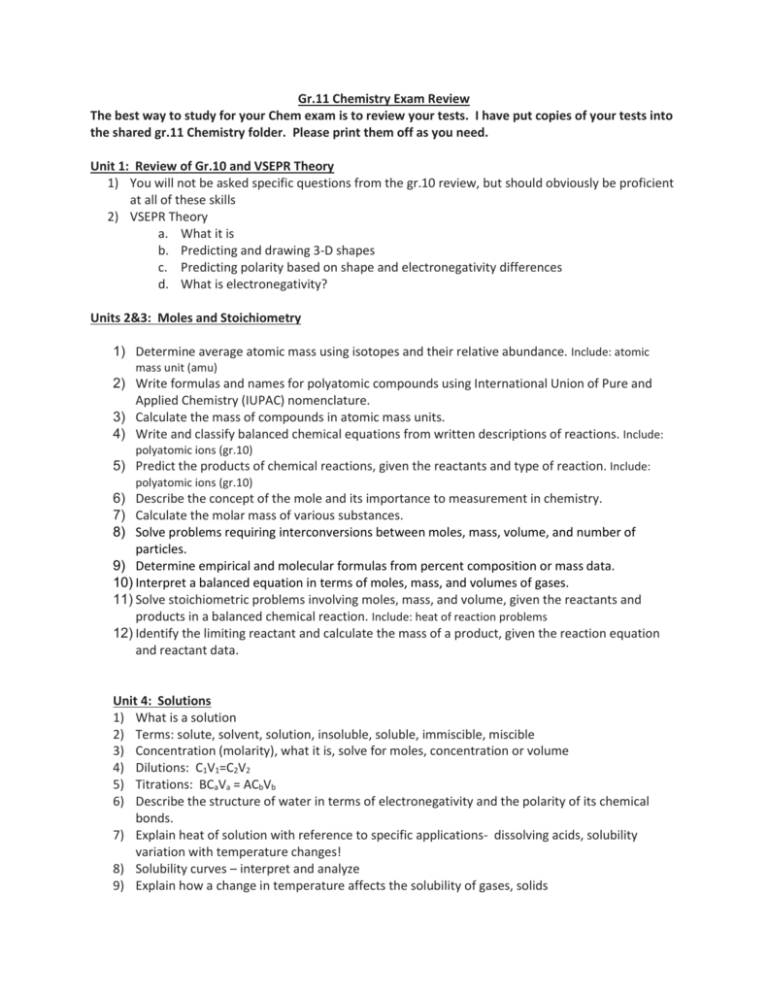
Gr.11 Chemistry Exam Review The best way to study for your Chem exam is to review your tests. I have put copies of your tests into the shared gr.11 Chemistry folder. Please print them off as you need. Unit 1: Review of Gr.10 and VSEPR Theory 1) You will not be asked specific questions from the gr.10 review, but should obviously be proficient at all of these skills 2) VSEPR Theory a. What it is b. Predicting and drawing 3-D shapes c. Predicting polarity based on shape and electronegativity differences d. What is electronegativity? Units 2&3: Moles and Stoichiometry 1) Determine average atomic mass using isotopes and their relative abundance. Include: atomic mass unit (amu) 2) Write formulas and names for polyatomic compounds using International Union of Pure and Applied Chemistry (IUPAC) nomenclature. 3) Calculate the mass of compounds in atomic mass units. 4) Write and classify balanced chemical equations from written descriptions of reactions. Include: polyatomic ions (gr.10) 5) Predict the products of chemical reactions, given the reactants and type of reaction. Include: polyatomic ions (gr.10) 6) Describe the concept of the mole and its importance to measurement in chemistry. 7) Calculate the molar mass of various substances. 8) Solve problems requiring interconversions between moles, mass, volume, and number of particles. 9) Determine empirical and molecular formulas from percent composition or mass data. 10) Interpret a balanced equation in terms of moles, mass, and volumes of gases. 11) Solve stoichiometric problems involving moles, mass, and volume, given the reactants and products in a balanced chemical reaction. Include: heat of reaction problems 12) Identify the limiting reactant and calculate the mass of a product, given the reaction equation and reactant data. Unit 4: Solutions 1) What is a solution 2) Terms: solute, solvent, solution, insoluble, soluble, immiscible, miscible 3) Concentration (molarity), what it is, solve for moles, concentration or volume 4) Dilutions: C1V1=C2V2 5) Titrations: BCaVa = ACbVb 6) Describe the structure of water in terms of electronegativity and the polarity of its chemical bonds. 7) Explain heat of solution with reference to specific applications- dissolving acids, solubility variation with temperature changes! 8) Solubility curves – interpret and analyze 9) Explain how a change in temperature affects the solubility of gases, solids 10) Explain how a change in pressure affects the solubility of gases. Question Types: See attached worksheet Unit 5: Gases and the Atmosphere Review Specific Learning Goals for this unit include: 1) Layers of Earth’s atmosphere 2) Examine the historical development of the measurement of pressure. Examples: the contributions of Galileo Galilei, Evangelista Torricelli, Otto von Guericke, Blaise Pascal, Christiaan Huygens, John Dalton, Joseph Louis Gay-Lussac, Amadeo Avogadro… 3) Units of pressure: atmospheres (atm), kilopascals (kPa), millimetres of mercury (mmHg), PSI 4) Boyles’ Law 5) Charles’ Law 6) Combined Gas Law 7) Ideal Gas Law Unit 6: Physical Properties of Matter 1) Describe the properties of gases, liquids, solids, and plasma. Include: density, compressibility, diffusion 2) Use the Kinetic Molecular Theory to explain properties of gases. Include: random motion, intermolecular forces, elastic collisions, average kinetic energy, temperature 3) Explain the process of melting, solidification, sublimation, and deposition in terms of the Kinetic Molecular Theory. Include: freezing point, exothermic, endothermic 4) Use the Kinetic Molecular Theory to explain the processes of evaporation and condensation. Include: intermolecular forces, random motion, volatility, dynamic equilibrium 5) Triple point diagrams 6) Heating curves 7) Kinetic and potential energy 8) temperature (Q=mcΔT) and enthalpy changes (Q=ΔHm or Q=ΔHn) Unit 7: Organic Chemistry 1) Alkanes, alkenes, alkynes 2) 3) 4) 5) . Numbering hydrocarbons Naming and structures (IUPAC names, molecular-, line-, structural-, condensed- formulas) Functional groups: carbonyl, carboxyl, hydroxyl, amine, methyl, ethyl, etc Types of organic compounds: alcohols, esters, aldehydes, ketones, etc.

